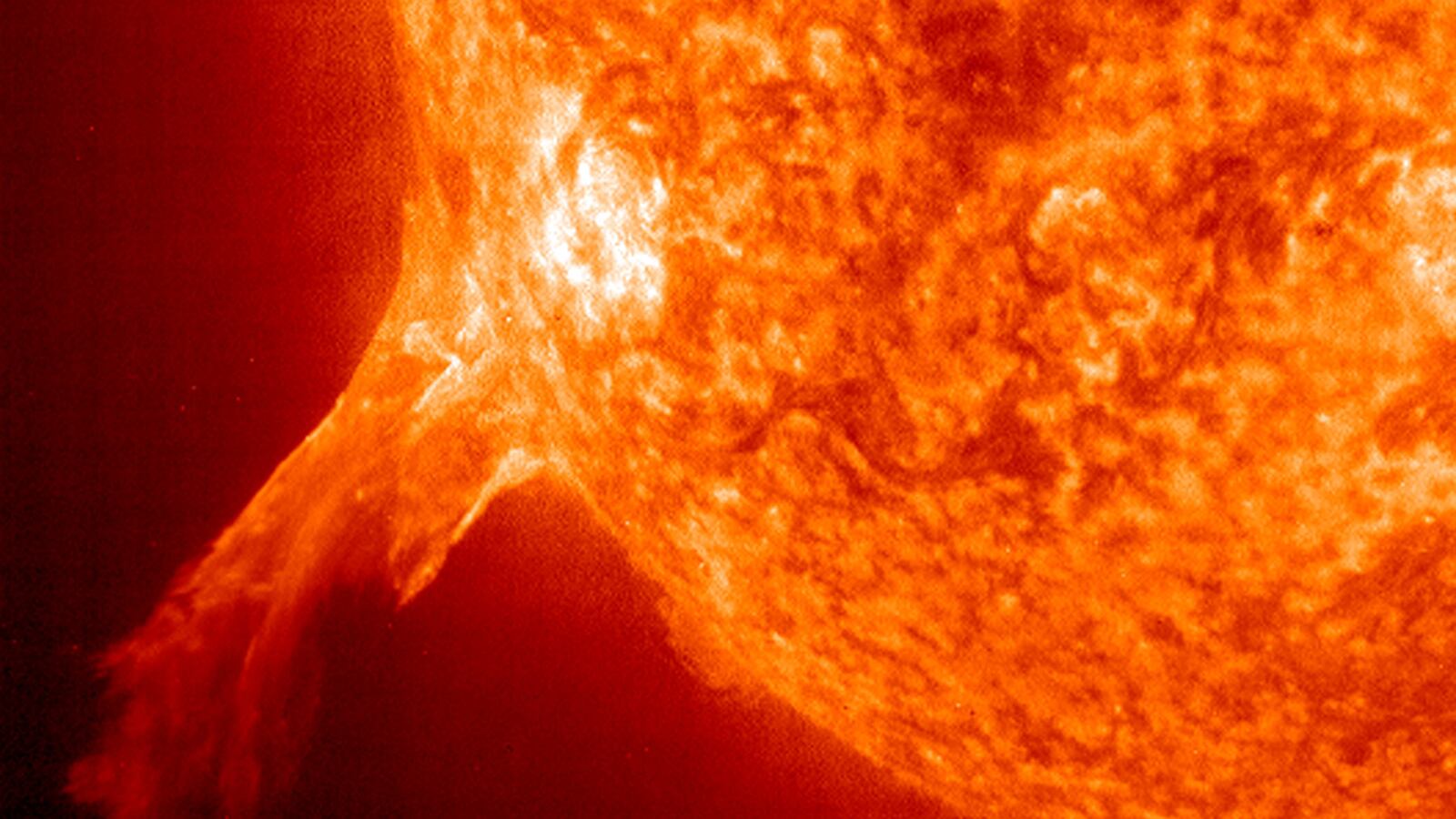The Universe is trying to kill us! Or at least, it’s not a very friendly place beyond the comforting confines of planet Earth. A recent study by solar physicists points out that we had a near-miss with a strong solar storm back in 2012. But how close did we really come to doom and destruction?
Our Sun is fairly quiet as stars go, but it does have active times that impact us here on Earth, both figuratively and literally. The Sun will occasionally send out coronal mass ejections (CMEs), or blasts of particles and electromagnetic radiation beyond its outer atmosphere, the corona. Sometimes, these CMEs make their way well beyond the Sun into interplanetary space. They are beautiful to behold, as countless images from orbiting platforms such as NASA’s Solar Dynamics Observatory show us. However, a CME pointed straight at Earth can have serious consequences.
Coronal mass ejections and other energetic solar events occur more frequently at the peak of the Sun’s 11-year solar cycle, which is driven by the flip of the magnetic poles of the Sun. We’re currently going through a peak of activity, though it has been quite a bit less active than in recent cycles. We’ve caught some real “whoppers” in progress, but nothing like this latest catch.
The study by Daniel Baker of the University of Colorado and his colleagues in the journal Space Weather looks at the aftermath of one such CME that hit the STEREO-A spacecraft in July 2012. Fortunately for us, the spacecraft was no where near Earth, as the pair of spacecraft STEREO-A and STEREO-B each observe the Sun from points on Earth’s orbit far from Earth itself. As far as distance is concerned, this particular solar event came nowhere near Earth. But, it gave scientists valuable information on such solar events.
The event was measured by the spacecraft in terms of the speed of the plasma, or ionized particles, that were ejected from the Sun past STEREO-A. The spacecraft survived the blast and provided the best measurements ever of what solar physicists have long termed the “worst case scenario.” Had the storm been directed at Earth, the energetic particles would have the potential to bring down the power grid and damage satellites that we’ve come to rely on for communication and navigation.
There are records of the Earth being hit by a solar storm of such strength before, even recently in humanity’s history. In 1859, astronomer Richard Carrington observed a strong solar flare that was directed at the Earth. The CMEs that followed it interacted with the Earth’s magnetic field, causing aurorae to be seen as far south as Cuba. Typically, aurorae only occur near the Northern and Southern magnetic poles as the magnetic fields funnel the ionized particles to those regions, creating the colorful display. That shows the magnetic field at work protecting us from these highly energetic particles. But it is not completely invincible to such a large storm as was observed in 1859, as some telegraph wires sparked and caught fire, affecting communications.
Similar events, though weaker in size, have been seen, like the 1989 flare that knocked out the power grid in Quebec and spread aurorae as far south as Florida and Texas. Today, we are ever-increasingly dependent on power, satellites, and gadgetry, and our smoothly running civilization would take quite a hit if a storm with the strength of the July 2012 storm did hit Earth. Widespread power outages are expected to cause trillions of dollars in damage, and a power outage in extreme winter or summer is sure to lead to an untold number of deaths.
Solar physicists have been warning us about these dangers for years. We can’t control the Sun, but we can monitor and study it and attempt to predict its behavior. That is why NASA and space agencies around the world have built a fleet of solar-monitoring spacecraft such as the STEREO pair, the Solar Dynamics Observatory, and other such missions. It’s not just for scientific curiosity. Living with a star can be dangerous.
And although this particular 2012 event was nowhere near Earth, the fortuitous event of it hitting one of our Sun-monitoring spacecraft gives us the hard data we need to convince nations to protect and shore up power grids against further blasts from the Sun. Consider it a wake-up call.






